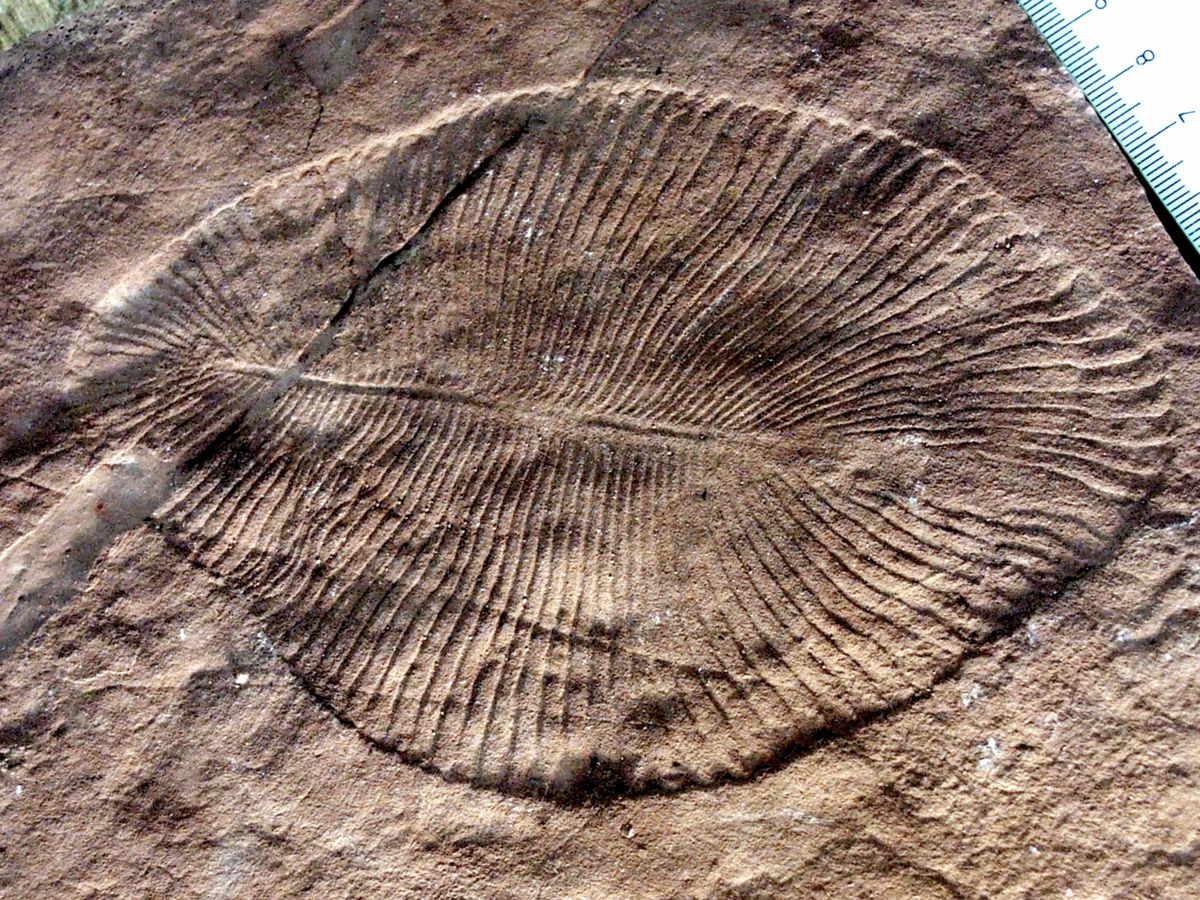
Life may have first emerged on land about 100 million years earlier previously thought, suggests a study that has scientists up in arms, many of whom are arguing that the research paper should never been published in the first place.
The study, published today (Dec. 12) in the journal Nature, suggests that ancient fossilized creatures found in Southern Australian sediments actually came from land, not from the ocean. If the findings are true, the fossils would have been lichenlike plants that first colonized land, not ocean-dwelling ancestors of jellyfish.
"We have big organisms living on land a lot further back than we thought before," said study author Gregory Retallack, a geologist and paleobotanist at the University of Oregon.
But the study has faced intense skepticism from several experts in the field — some of whom have questioned not only the study's scientific validity, but also its acceptance into a prestigious scientific journal.
"I find Retallack's observations dubious, and his arguments poor. That this was published by Nature is beyond my understanding," wrote Martin Brasier, a paleobiologist at the University of Oxford who was not involved in the study, in an email.
Primitive sea dwellers
Scientists first discovered the fossils in 1947 in the Ediacaran Hills of Southern Australia. The reddish rocks contained imprints from a strange, striated creature called Dickinsonia, as well as other primeval creatures that lived around 550 million years ago. [Extreme Life on Earth: 8 Bizarre Creatures]
Sign up for the Live Science daily newsletter now
Get the world’s most fascinating discoveries delivered straight to your inbox.
Until now, scientists had long believed the rocks were made up of ocean sediments and that Dickinsonia and other primeval creatures fossilized in the outcroppings were sea dwellers similar to jellyfish or sea pens that lived just before the Cambrian explosion began about 540 million years ago, when all the major animal groups suddenly appeared.
But when Retallack first saw the fossils, he wondered whether they were formed on land. In particular, the fossils had a reddish hue that comes from oxygen in the atmosphere reacting with iron to create rust — a process that doesn't happen under the sea, he said. He also noticed that nodules throughout the rock looked strikingly similar to the rootlike structures put out by primitive lichen or fungi found in other ancient soils.
To see if some of the Ediacaran fossils were land-dwellers, he tested the rock's composition and found it was characteristic of the very first stages of soil formation on land, in which nutrients such as potassium and magnesium are depleted. A similar process doesn't happen in the ocean, he said.
In the current paper, Retallack argues that the ancient fossils are actually a primitive precursor to lichen or fungi and that they helped colonize land, paving the way for the Cambrian explosion.
Even today, lichen are the pioneers that first take root on bare rock, creating the precursors of soil (other organisms can grow on lichens).
"One of the first things that happens when you have a piece of bare ground is some lichen come in and eventually some new stuff comes in like dandelions, and pretty soon you've got a tall Douglas fir forest," Retallack told LiveScience.
Scientists skeptical
But several scientists have called his claims into question and wonder why Nature published the piece. [Top 10 Science Journal Retractions]
The rocks may have turned their reddish hue much more recently, some 65 million years ago, when they somehow rose above the water; in that scenario, the sediments could have been underwater at the time Dickinsonia and other Ediacaran creatures lived, Shuhai Xiao, a paleontologist at Virginia Tech wrote in an accompanying article in Nature. In addition, the chemical composition of the rocks doesn't preclude the fossils originating in the ocean.
What's more, some of the fossils are oriented as if they were dragged by current or ocean waves, Xiao wrote. Finally, many of the species Retallack reclassifies as land-dwellers are found elsewhere in the world in rocks that are unambiguously formed from ocean sediments.
Retallack's ideas "would represent a fundamental change in our picture of evolution, but they will probably face continuing skepticism because the evidence is unconvincing," he wrote.
Follow LiveScience on Twitter @livescience. We're also on Facebook & Google+.

Tia is the managing editor and was previously a senior writer for Live Science. Her work has appeared in Scientific American, Wired.com and other outlets. She holds a master's degree in bioengineering from the University of Washington, a graduate certificate in science writing from UC Santa Cruz and a bachelor's degree in mechanical engineering from the University of Texas at Austin. Tia was part of a team at the Milwaukee Journal Sentinel that published the Empty Cradles series on preterm births, which won multiple awards, including the 2012 Casey Medal for Meritorious Journalism.










